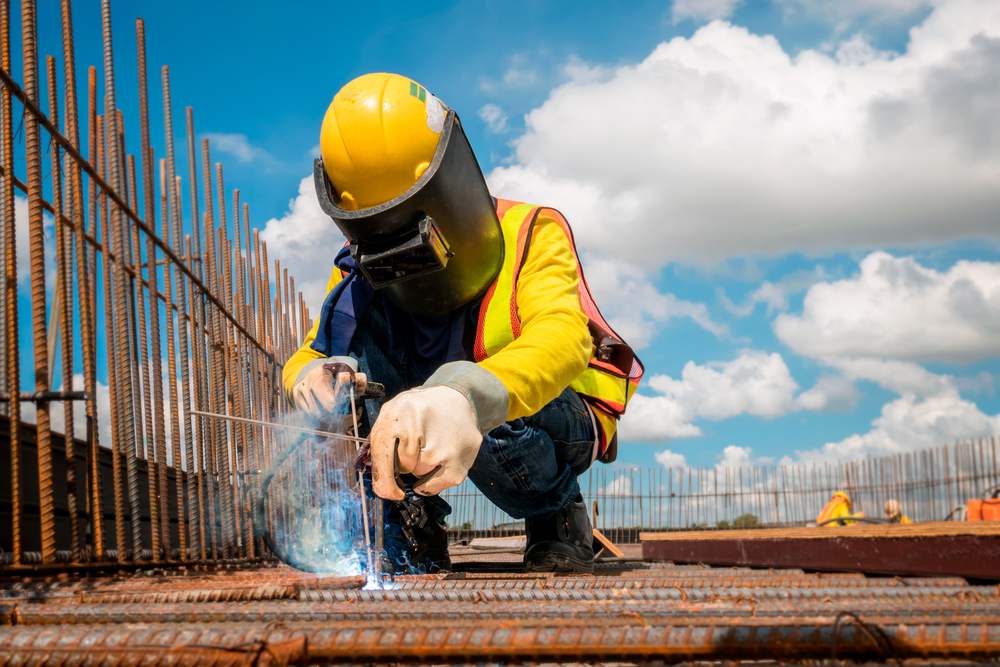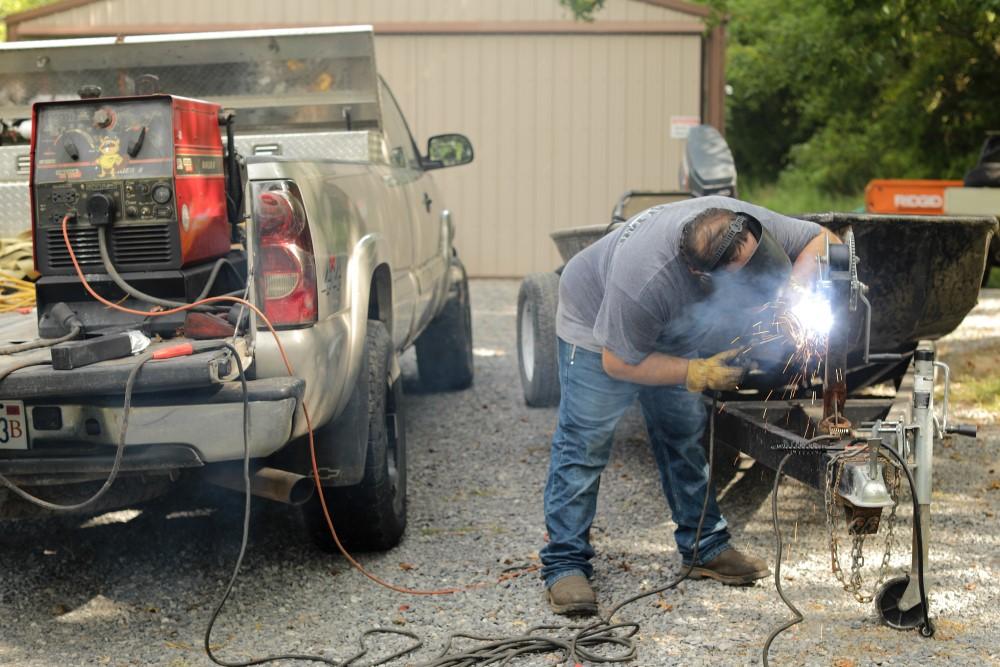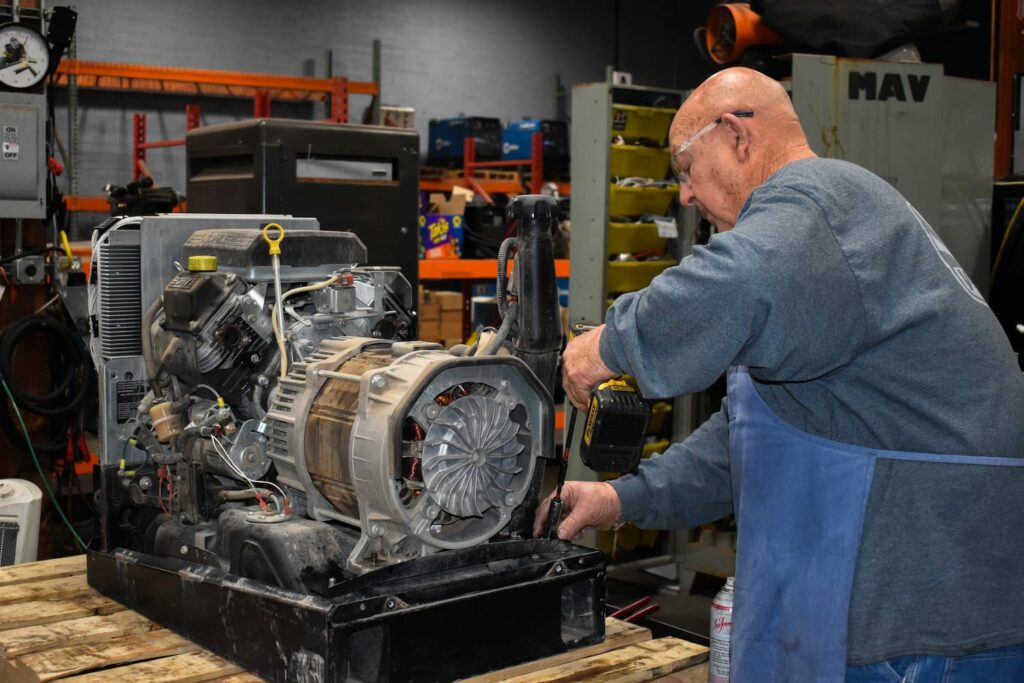Checklist for weld distortion by Belgrade Fabrication
Wiki Article
Common Welding Repair Issues and How to Address Them Properly
Welding fixings commonly run into a variety of concerns that can jeopardize the honesty of the last product. Typical troubles consist of inadequate infiltration, porosity, and imbalance, amongst others. Each issue provides special obstacles that need specific strategies for resolution. Recognizing these issues is necessary for welders aiming to boost their results and abilities. This discussion will check out these typical welding repair work problems and effective methods to resolve them.Poor Infiltration
Poor infiltration occurs when the weld steel stops working to totally fuse with the base product, causing weak joints and prospective structural failures. This issue often originates from inadequate heat input, wrong electrode angle, or incorrect welding rate. Welders might experience insufficient penetration as a result of a miscalculation of the needed parameters for a certain material density or kind. In addition, contamination on the base material's surface can impede efficient bonding, intensifying the problem. To deal with poor infiltration, welders ought to assure ideal settings on their devices and maintain a tidy job surface area. Normal evaluation of welds is advised to identify any type of deficiencies early, enabling timely adjustments and the avoidance of jeopardized structural stability in welded settings up.Porosity
Porosity is a common problem in bonded joints that materializes as small gas bubbles trapped within the weld steel. This problem can jeopardize the stability of the weld, leading to reduced stamina and potential failing under tension. Fabrication. Porosity normally develops from contamination, moisture, or improper welding methods, which enable gases to get away right into the liquified weld pool. To attend to porosity, welders need to ensure appropriate surface preparation, maintain a tidy workplace, and use suitable welding criteria. Furthermore, selecting the appropriate filler product and protecting gas can mitigate gas entrapment. Regular examination and screening of welds can help recognize porosity early, ensuring timely rehabilitative actions are taken, consequently protecting the top quality and integrity of the bonded structureMisalignment
Imbalance in welding can occur from numerous factors, consisting of inappropriate configuration and thermal growth. Recognizing the source is necessary for effective resolution. Several improvement methods are available to realign parts and ensure structural stability.Reasons for Imbalance
Welding misalignment often originates from a variety of underlying concerns that can endanger structural integrity. One key cause is incorrect fit-up of components before welding, which can result in spaces and unequal surface areas. Variations in thermal growth during the welding procedure can likewise result in distortion, specifically if the products being joined have various coefficients of development. In addition, inadequate clamping and fixturing may stop working to hold parts firmly in area, causing movement during welding. Poorly conserved devices, including welding makers and devices, may introduce inconsistencies in the weld bead, more adding to imbalance. Driver mistake, stemming from not enough training or experience, can likewise play a substantial function in creating misaligned welds.
Correction Methods Readily Available
Addressing imbalance properly calls for a mix of corrective methods customized to the specific problems available. One common technique is using jigs or components to hold elements in the proper placement during welding, ensuring constant placement. Furthermore, pre-heating the products can help in reducing distortion and boost fit-up. For considerable imbalance, mechanical adjustment techniques, such as using hydraulic jacks or clamps, can be used to fix the placement prior to welding. Post-weld warmth therapy may also be necessary to relieve stresses caused by imbalance. Cautious inspection and change throughout the configuration stage can protect against imbalance problems from ending up being substantial problems, advertising a smoother welding process and enhancing general architectural stability.Distortion
Distortion is a common obstacle in welding that can occur from numerous elements, including unequal heating & cooling. Recognizing the root causes of distortion is essential for implementing reliable prevention methods. Resolving this issue not just enhances structural integrity but also boosts the overall quality of the weld.Root causes of Distortion
When based on the intense warm of welding, products often undertake adjustments that can result in distortion. This sensation mainly develops from thermal expansion and contraction during the welding procedure. As the weld area warms up, the product broadens; upon air conditioning, it contracts, which can create internal stress and anxieties. Furthermore, unequal heating across a work surface can intensify these stresses, leading to warping or flexing. The kind of product likewise plays a considerable function; metals with varying thermal conductivity and coefficients of growth may react in a different way, bring about unforeseeable distortions. Inadequate joint style and poor fixturing can add to imbalance throughout welding, boosting the chance of distortion. Recognizing these reasons is crucial for effective welding repair and avoidance approaches.Avoidance Techniques
Efficient prevention techniques for distortion during welding emphasis on regulating warmth input and making certain correct joint style. Keeping a regular heat input helps to lessen thermal growth and contraction, which can bring about distortion. Making use of techniques such as pre-heating the workpiece can likewise minimize the temperature level gradient, advertising consistent heating. In addition, picking appropriate joint styles, such as T-joints or lap joints, can boost security and reduce tension focus. Applying proper fixturing to safeguard the work surfaces in place even more help in maintaining alignment throughout the welding procedure. Staggered welding sequences can disperse heat much more uniformly, avoiding local Recommended Site distortion. By using these techniques, welders can considerably decrease the possibility of distortion and enhance the general top quality of their welds.Cracking
Fracturing is an usual issue experienced in welding fixings, commonly arising from numerous variables such as incorrect cooling rates, material choice, or poor joint prep work. The event of cracks can greatly endanger the integrity of the weld, leading to potential failings throughout operation. To resolve this problem, welders need to first examine the origin, guaranteeing that materials work and suitably picked for the particular application. Additionally, managing the cooling rate during the welding procedure is necessary; fast cooling can cause stress and anxiety and lead to splitting. Appropriate joint style and prep work likewise add to reducing the risk. Executing these methods can boost weld high quality and resilience, inevitably lowering the chance of fracturing in finished weldments.
Incomplete Fusion
A considerable concern in welding repair services is insufficient blend, which takes place when the weld steel does not effectively bond with the base product or previous weld passes - Belgrade Fabrication. This problem can lead to weaknesses in the joint, potentially jeopardizing the integrity of the bonded framework. Factors adding to insufficient go to the website blend include insufficient heat input, improper welding technique, and contamination of the surface areas being signed up with. To address this issue effectively, welders should ensure appropriate pre-weld cleansing and surface area prep work, in addition to readjust their welding parameters to attain adequate penetration and fusion. Normal examination during the welding process can also aid determine incomplete fusion early, enabling prompt rehabilitative steps to enhance the overall quality of the weldOverheating
While welding fixings can enhance architectural integrity, overheating presents a substantial obstacle that can bring about material deterioration. Extreme warmth during welding can change the mechanical properties of metals, resulting in minimized stamina, enhanced brittleness, and warping. This phenomenon is especially vital in high-stress applications where structural dependability is paramount. Recognizing getting too hot can include visual assessments for discoloration or distortion, along with keeping track of temperature level throughout the welding process. To mitigate the risks connected with getting too hot, welders must use proper strategies, such as controlling warmth input, adjusting traveling speed, and using suitable filler products. Additionally, executing pre- and post-weld warm therapies can help bring back material buildings and enhance the total high quality of the repair service, making sure lasting efficiency and security.Frequently Asked Concerns
What Are the Typical Indicators of a Welding Flaw?

Exactly How Can I Check My Welds for Quality?
To test welds for top quality, one can make use of aesthetic assessments, ultrasonic testing, and radiographic approaches. Each technique ensures structural honesty, identifies defects, and verifies adherence to specified standards, ultimately boosting the reliability of the bonded joints.What Security Safety Measures Should I Take While Welding?
When welding, one ought to focus on safety and security by putting on proper personal safety tools, ensuring proper ventilation, safeguarding combustible products away, maintaining a clean office, and knowing environments to stop injuries and accidents.Can I Repair a Weld Without Remodeling the Entire Joint?
Fixing a weld without redoing the whole joint is possible, depending upon the damages (Belgrade Fabrication). Techniques such as grinding, including filler material, or making use of a welding process can successfully attend to particular defects while preserving the surrounding frameworkWhat Equipment Are Essential for Effective Welding Repairs?
Essential tools for efficient welding fixings include a welding maker, cord brush, mill, protective gear, clamps, and filler products. Each tool plays a crucial duty in making certain top quality and security throughout the fixing procedure. Porosity typically occurs from contamination, wetness, or improper welding methods, which enable gases to run away into the liquified weld swimming pool. Inadequately kept equipment, consisting of welding machines and devices, may introduce incongruities in the weld grain, more adding to misalignment. When subjected to the intense warm of welding, products usually go through changes that can lead to distortion. Splitting is a typical problem encountered in welding repairs, typically resulting from various elements such as inappropriate cooling rates, product choice, or poor joint prep work. A considerable issue in welding repair work is insufficient fusion, which takes place when the weld steel does not adequately bond with the base product or previous weld passes.Report this wiki page